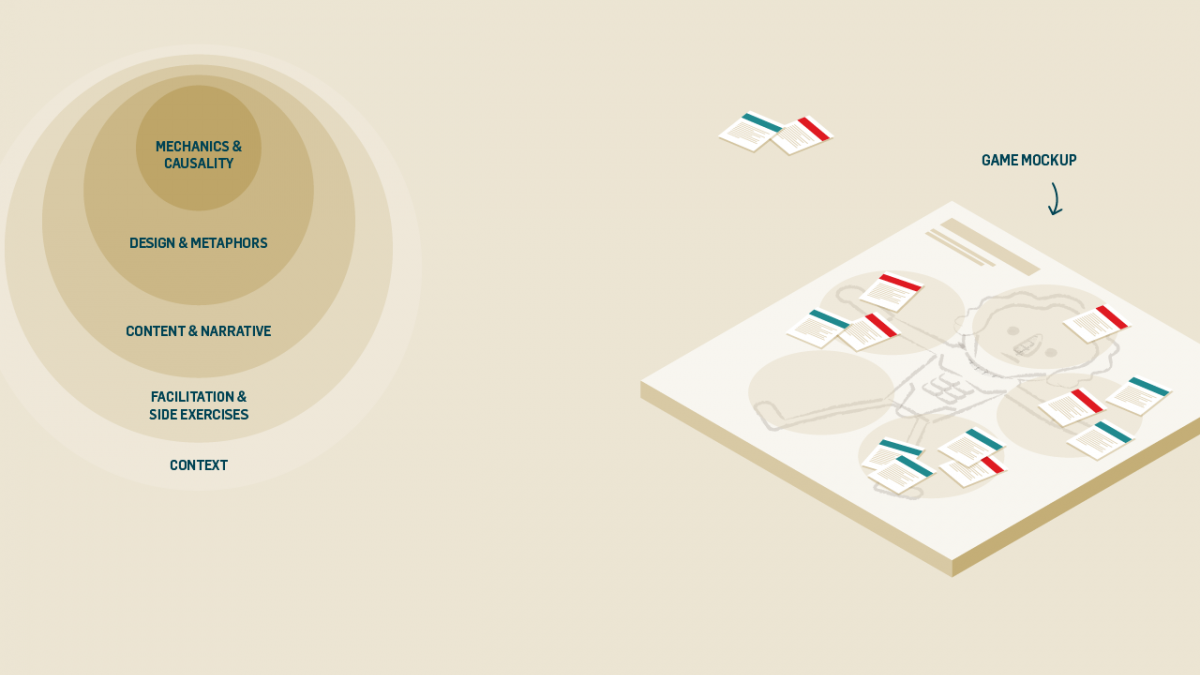“Man is most nearly himself when he achieves the seriousness of a child at play", wrote Heraclitus (535-475 BC).
Employing physical game-based tools can, if done right, contribute substantially to the execution of strategic change.
However, there is a range of potential pitfalls that are important to keep in mind if an organisation wants to realise the full benefits of a gamified approach.
Diffused learning goals
You need to be quite specific about what you want to gain from your process. A positive atmosphere, team building, or a hectic and competitive spirit can be part of the game experience but should never be the objective in themselves.
You must be cautious with solutions that want to achieve too much at the same time and you must remember that pleasing your participants should not be your sole focus. Some conversations and topics are necessary to get in play in spite of the participants’ initial scepticism.
The competitive spirit takes over
Many people understand gamification simply as the use of competitive elements. Creating energy and motivation by letting the participants compete against each other can make perfect sense, yet it does not take a lot for a competitive race to begin overshadowing the participants’ ability to reflect and take part in the important conversations. Competition must be added with caution.
Too much complexity
Game solutions quickly get too complex and in the design process you often end up developing a solution that tries to achieve too much.
The hardest thing in the process is to prioritise rigorously and go for the simple and elegant solutions that seem intuitive to the participants. It is important that the participants do not feel that they have to fight with or against the game mechanics.
Distance from the everyday life
Games are always an abstraction but sometimes the distance to the recognisable everyday life becomes too great.
You must be careful not to introduce very abstract game worlds where the participants must strive to draw parallels to their own organisation.
Decoupled game dynamics
Sometimes a learning game is designed using the game dynamics from classic family games like Monopoly or Trivial Pursuit as the point of departure. Typically, the game dynamics are controlled by the roll of dice and corresponding questions or dilemmas.
Such solutions can work as a means of communication but they bypass many of the strong points that game-based training has to offer.
We recommend solutions where the game mechanics are designed in a way that directly supports the learning goals.
Lack of reflection
The gain from a learning game is directly linked to the overall process that the tool is a part of. Without framing, follow-up with reflection, and putting the experience into perspective even the best games turn into a ‘fun day’ with no connection to everyday life.
A rule of thumb is that you need just as much time for the framing and the putting into perspective as for the game experience itself.
E-learning
Individual E-learning, where the participants go through a course on their own screen, can be a good way to create awareness of a topic across a large organisation in an easy and inexpensive way. In this kind of a solution it can make sense to integrate some game elements such as little dilemmas, prioritisation exercises, and quizzes in order to improve engagement.
If the objective, however, is to create real change in understanding, culture, and behaviour, or to train new skills it is necessary to get people together in the same room. In part, to create a mutual connection and a shared realisation and commitment, but also because the gain from a game process in most instances primarily comes from the knowledge, experience, and reflections that the participants share.


